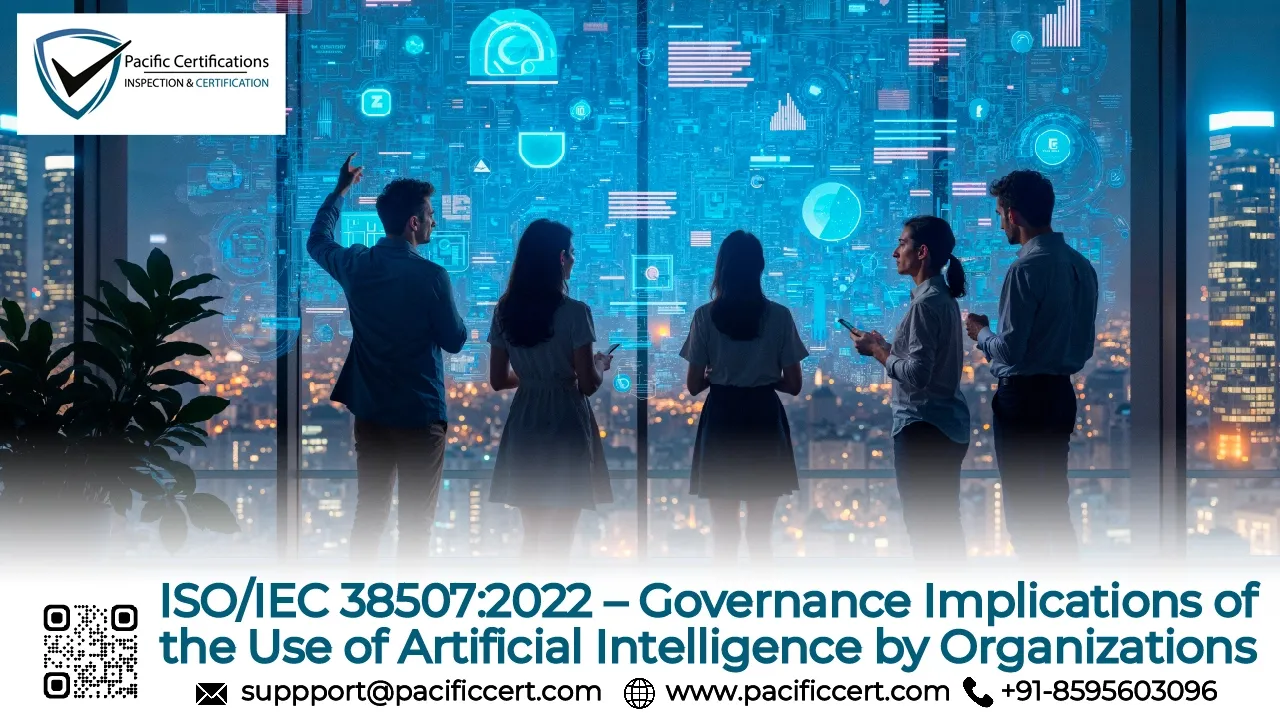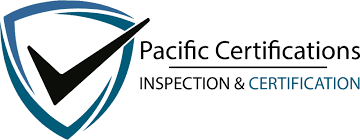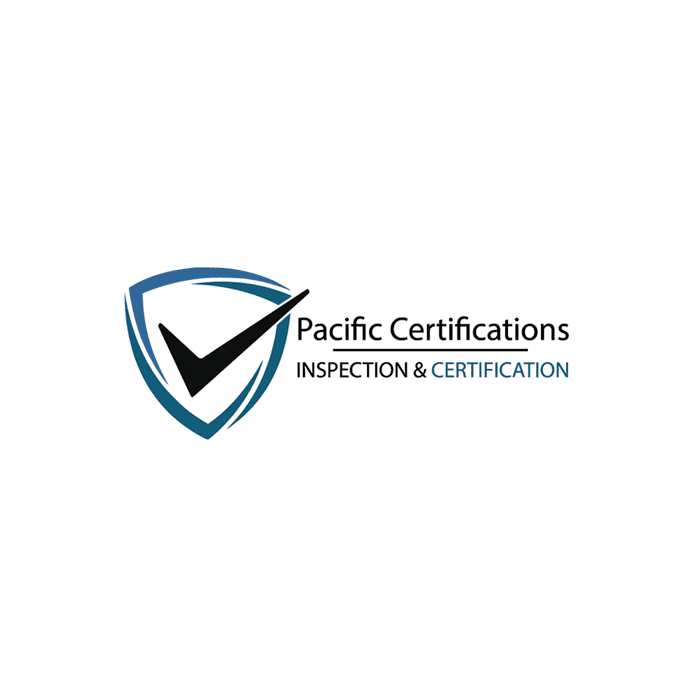ISO/IEC 38507:2022 Governance and AI Use Implications for Organizations

Introduction of ISO/IEC 38507:2022
Organizations across industries are increasingly leveraging artificial intelligence (AI) solutions, whether for customer insights, decision automation, predictive analytics or operational optimization. As this trend deepens, questions of governance, accountability and ethical-use become central rather than peripheral. The adoption of AI systems presents not only opportunities for competitive advantage, but also risks tied to bias, data misuse, stakeholder trust, regulatory non-compliance and reputational damage. In that context, ISO/IEC 38507:2022 offers guidance aimed at the governing body of an organization, its board, trustees or equivalent—to ensure the use of AI is effective, efficient and acceptable.
For organizations with mature governance systems, applying ISO/IEC 38507 helps align AI deployment with strategic objectives, values and stakeholder expectations. For less mature organizations, it sets a framework to evolve oversight, transparency and risk-management around AI, rather than leaving AI governance to chance.
Effective AI governance is not just about technology; it’s about ensuring the board remains accountable for AI outcomes just as it is for any strategic decision
If you need assistance with ISO/IEC 3850, contact us at [email protected]!
Quick Summary
ISO/IEC 38507:2022 helps organizations formalize how they govern AI use, defining board accountability, clarifying roles and responsibilities, integrating AI risk into existing governance frameworks, ensuring transparency, and aligning AI deployment with organizational values and stakeholder expectations.
What is ISO/IEC 38507:2022?
ISO/IEC 38507:2022 is an international standard titled "Information Technology — Governance of IT — Governance implications of the use of artificial intelligence by organizations." It was developed to provide board members and executive stakeholders with a framework for evaluating, directing, and monitoring AI usage across the enterprise.
ISO/IEC 38507 focuses specifically on the governance layer unlike other AI specific standards, ensuring that decision-making related to AI aligns with corporate objectives, legal requirements, ethical expectations and societal values.
The purpose of ISO/IEC 38507 is to equip organizations with high-level governance tools to manage the strategic risks and opportunities that come with AI adoption. It helps stakeholders:
- Understand the enterprise-wide impact of AI
- Establish clarity over roles and responsibilities for AI-related decisions
- Develop mechanisms for risk management, performance evaluation, and stakeholder assurance
- Integrate AI governance into existing corporate governance frameworks
Clause-wise Structure of ISO/IEC 38507:2022
Clause | Title | Summary |
1 | Scope | Defines the application and boundaries of AI governance responsibilities |
2 | Normative References | References ISO/IEC 38500 and related governance standards |
3 | Terms and Definitions | Clarifies key AI and governance terminology |
4 | Application of ISO/IEC 38500 Principles to AI Governance | Maps ISO 38500 principles to AI-specific contexts |
5 | Governance Considerations for AI | Outlines board-level strategic, ethical, and regulatory considerations |
6 | Implementation Guidance | Provides structured steps and best practices for integrating AI governance |
Need support? Contact us at [email protected] today!
What are the requirements of ISO/IEC 38507:2022?
The standard provides guidance rather than prescriptive controls. However, its implementation requires organizations to:
Establish board-level accountability for AI usage and outcomes, ensuring that the governing body retains responsibility rather than simply delegating oversight to technical teams.
Clarify roles, responsibilities and escalation pathways for decisions involving AI systems, including human oversight of automated decisions.
Integrate AI-related risks into the organization's overall risk management framework, covering ethical, reputational, data-protection, bias and compliance risks.
Ensure transparency, traceability and documentation of AI system lifecycle decisions, data sources, purposes of use and monitoring mechanisms.
Align AI use with the organization's purpose, culture, values and stakeholder expectations, avoiding misalignment or unintended consequences.
Develop and regularly update policies covering AI governance oversight, decision-making frameworks, data governance and ethical considerations.
Review and adapt existing governance structures (audit, risk, compliance, ethics) to incorporate AI-specific oversight rather than leaving AI governance as an add-on.
Tip: Start by conducting a gap analysis of your current governance structure against ISO/IEC 38507’s guidance—identify whether your board explicitly oversees AI, whether roles are clear and whether AI risk is integrated. Use results to prioritize updates to policies, board training and governance linkage.
What is the Documentation required for ISO/IEC 38507?
Organizations adopting the standard should maintain structured documentation such as:
- AI governance policies and board position papers
- AI-specific risk registers and ethical assessments
- Board review records and oversight meeting minutes
- Internal audit and monitoring frameworks for AI systems
- Stakeholder transparency reports and communications protocols
What are the benefits of ISO/IEC 38507:2022?
The benefits of ISO/IEC 38507 are:
- Strengthens governance controls over AI, supporting accountability, oversight and confidence in decision-making.
- Aligns AI deployment with organizational strategy, values and stakeholder expectations, reducing risks of mis-aligned or rogue AI initiatives.
- Demonstrates to regulators, customers and partners that the organization treats its use of AI with seriousness and structure, which can enhance reputation and credibility.
- Encourages transparency and explainability of AI decisions—important in high-trust sectors or regulated environments.
- Prepares the organization for evolving regulatory requirements around AI (such as algorithmic fairness, data governance, AI risk regulation).
- Provides governance support for responsible innovation—enabling AI use without losing control or oversight.
The demand for ISO/IEC 38507:2022 in the United States has significantly increased due to mounting regulatory attention and public concern over the ethical use of AI. Government agencies such as the Federal Trade Commission (FTC) and Securities and Exchange Commission (SEC) have issued guidance on algorithmic fairness, transparency, and non-discrimination, areas squarely addressed by this standard.
Meanwhile, major U.S. corporations are incorporating AI ethics into their ESG frameworks and boardroom discussions, particularly in tech-forward cities like San Francisco, New York, Washington D.C., Boston, and Austin. As states implement their own AI risk management laws, forward-thinking organizations are adopting ISO/IEC 38507 to establish leadership in responsible AI governance.
Who Needs ISO/IEC 38507:2022?
This standard is especially important for organizations in AI-intensive or regulated environments, such as:
Healthcare systems and research organizations
Healthcare systems and research organizations using AI for diagnostics or treatment support
Financial services firms
Financial services firms deploying AI for credit scoring or fraud detection
Public sector agencies
Public sector agencies implementing smart city or surveillance technologies
Defense contractors and aerospace manufacturers
Defense contractors and aerospace manufacturers governed by national security frameworks
Tech firms and AI startups
Tech firms and AI startups working on algorithmic solutions with social impact
Even organizations with minimal in-house AI development may face governance challenges when procuring or integrating third-party AI systems—making this standard broadly relevant across industries.
Scope and Applicability of ISO/IEC 38507
ISO/IEC 38507:2022 applies to all organizations that develop or use AI-based systems and solutions, regardless of industry, size, or technical capability. The standard is relevant across the public and private sectors, and is particularly valuable to:
- Companies deploying AI for automated decision-making
- Public service agencies integrating AI into critical infrastructure
- Boards responsible for overseeing AI risk, compliance, and impact
- Governance, risk, and compliance teams tasked with defining oversight procedures
- Organizations seeking to align with U.S. or international AI regulations
It complements existing governance models by ensuring that AI-specific risks and obligations are embedded at the strategic level.
Implementation Timeline
Stage | Estimated Duration |
Initial board-level awareness workshop | 1–2 weeks |
Gap assessment and documentation review | 2–3 weeks |
Drafting of AI governance policies | 3–4 weeks |
Integration with ERM and IT governance | 4–6 weeks |
Ongoing monitoring and periodic review | Continuous (quarterly/annually) |
How Pacific Certifications Can Help?
At Pacific Certifications, we understand the critical importance of strategic governance in the age of AI. For ISO/IEC 38507, our role as an accredited certification body enables us to support your organization in integrating this standard with systems such as ISO 27001, ISO 9001, and ISO/IEC 42001.
We can assist by:
- Conducting structured governance audits based on ISO/IEC 38507 guidance
- Identifying integration points with existing management systems (e.g., ISO/IEC 27001, 42001)
- Reviewing AI governance frameworks to ensure transparency and alignment with international norms
- Supporting internal compliance assessments for board-level oversight of AI
- Providing audit documentation for organizational reporting or board-level review
To begin aligning your organization’s AI strategy with global governance principles, contact us at [email protected].
Ready to get ISO 38507 certified?
Contact Pacific Certifications to begin your certification journey today!
Author: Alina
Suggested Certifications:
Read more: Pacific Blogs

